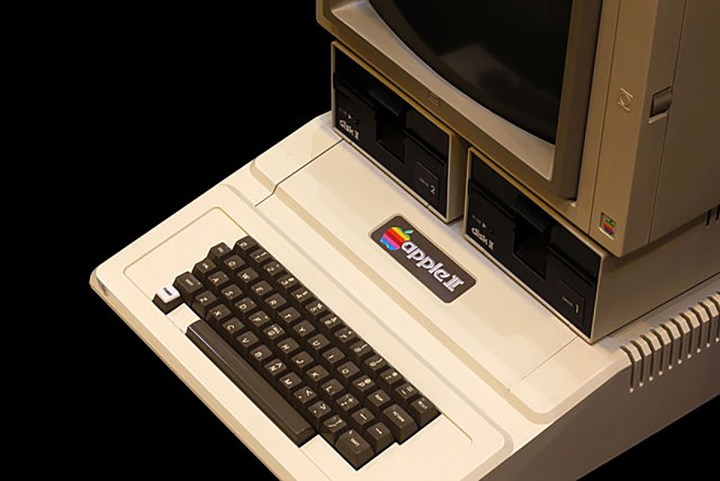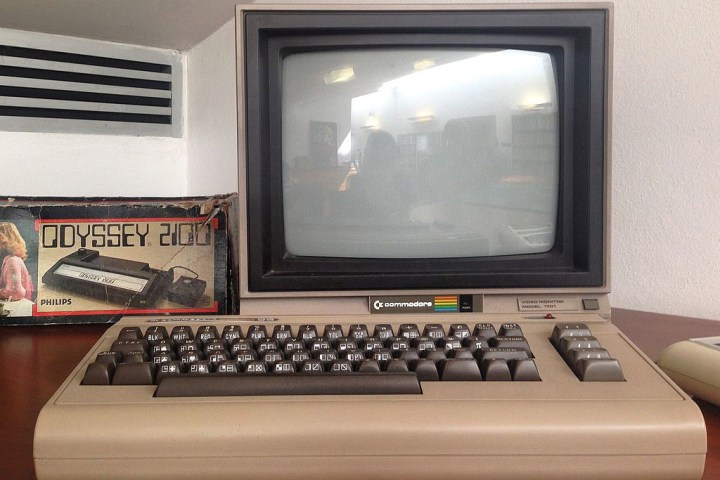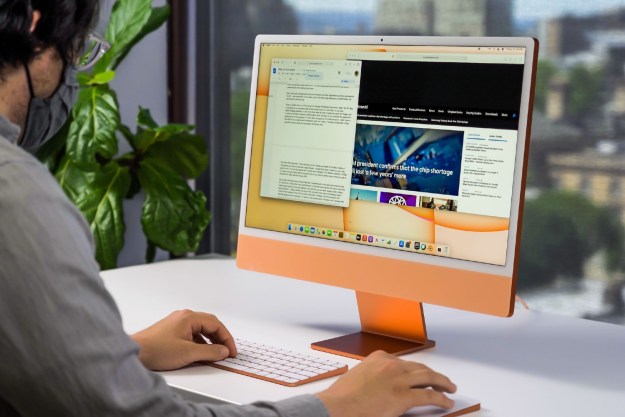Forty years ago this week, the iconic IBM PC made its debut, cementing the personal computer as a mainstream product category to be reckoned with. Within a few years, America — and the world — went computer wild, with home computers suddenly the province of ordinary people.
But which desktop computers go down as the most influential of all time? Here are 10 that changed the game.
#10. Microsoft Surface Studio
The Surface Studio is likely to be the most controversial pick on this list. It’s also by far the newest computer, debuting in late 2016, with a successor, the Surface Studio 2, coming along two years later. Like Apple’s iMac, the Surface Studio is a sleekly minimalist all-in-one. Unlike the Mac, it didn’t become a massive hit whose continued existence is all but assured. So why does it make the list? Simply put: Because personal computers are changing.
The line which delineated personal computers from surrounding product categories has always been slightly blurred, but never more so than they are in 2021. Today, most PC enthusiasts build their own computers, making chipsets far more important than individual PC model numbers. Furthermore, the tasks once carried out on personal computers can now be done on touch-based devices like tablets and smartphones.
The Surface Studio is an attempt to reconcile the new role of the PC: A blend of touchscreen interface, gorgeous quality monitors, and traditional PC functionality. Nothing about the progression of personal computers feels inevitable. But the Surface Studio is as good a glimpse as you could hope for of the future.
#9. Apple Lisa
The Lisa is one of those strange computers on this list: A major flop at the time, which nonetheless paved the way for the undisputed future of computing. Thanks to a deal between Apple and Xerox PARC, the Lisa came with Apple’s version of the WIMP (windows, icons, mouse pointer) interface. Apple had honed this technology, however, and was the first to introduce it to the masses.
At a launch cost of $9,995 in January 1983 (that’s $27,000 today), those masses weren’t exactly, well, masses. But the Lisa paved the way for the Macintosh one year later. And it came advertised with a great TV spot featuring a very young Kevin Costner.
#8. iMac G3
The 1998-era translucent, colorful iMac G3 was one of the most memorable designs of its day. “It looks like it’s from another planet,” said Steve Jobs, the Apple CEO who had just returned to the company he co-founded after more than a decade in the wilderness. “A good planet. A planet with better designers.” That designer was Jony Ive, the man who would go on to design the iPod, iPhone, iPad, and countless other Apple products over the following two decades.
As far as innovations go, the iMac G3 eliminated the floppy disk drive and leaned into the kind of simple, out-of-the-box usability that Apple remains known for. This was the machine that announced to the world that, after a painful few years of decline, Apple was once again a force to be reckoned with.
#7. The beige box
Yes, this one is a cheat, but how can you not acknowledge it? By the 1990s, the era of the beige box computer was underway. Aside from Apple, few other companies made their own distinctive machines but rather used off-the-shelf, generic components to assemble affordable personal computers for an ever-growing market.
Were these machines boring, though? Far from it. They may often have looked bog-standard, but they nonetheless laid the groundwork for the way PCs have developed: Modular machines that can be assembled to fit the whims and requirements of their owners. Missing the beige box off a list like this is like missing The Beatles’ White Album off a list of great albums because it doesn’t have eye-catching cover art.
#6. Xerox Star

Not every computer on this list set the world on fire in terms of sales. Some of the greatness of these machines is more about retrospect than their reception at the time. None more so than the Xerox Star: A personal computer that, 40 years ago, in 1981, brought the world a bitmapped display, graphical user interface, two-button mouse, Ethernet networking, email, and a plethora of other innovations.
Unfortunately, an eye-watering price of $16,500 with software (the equivalent of $48,000 today) was one contributing factor for its dismal marketplace performance. Nonetheless, without the pioneering work of Xerox PARC, which the Star owes its existence to, computers today would look very different.
#5. MITS Altair 8800

Pinpointing exactly when the personal computer revolution started is difficult. But for those trend-spotters who got in on personal computers before most of the world had even heard of them, the MITS Altair may be ground zero. Kickstarting a revolution, the MITS Altair 8800 (to use its full name) appeared on the front cover of Popular Electronics magazine in 1976.
Compared to the room-filling or, at least, fridge-sized computers found in corporations and large universities at the time, the kit-based Altair was small enough to fit on a desk. It was far less powerful than the big commercial computers of the time, of course, but it was also a huge step up from what most hobbyists had access to. It was powered by Intel’s then-new 8080 microprocessor.
A couple of unknown student-entrepreneurs named Bill Gates and Paul Allen (wonder what happened to them!) used the Altair to create a version of BASIC. It became the first product Microsoft ever launched.
#4. Apple II

The clue that this wasn’t Apple’s first computer was in the name, but make no mistake about it: The Apple II was the computer that launched Apple to the world. Unlike other personal computers of its year, the 1977-era Apple II was capable of displaying color. It was designed by Apple co-founder Steve Wozniak, with its iconic industrial design by Jerry Manock looking more like a household appliance than a geeky piece of hobbyist tech.
Apple continued producing Apple II models of some stripe all the way into the 1990s, showing incredible longevity. In all, the Apple II laid the foundations for not just Apple, but the mass-market personal computer industry as a whole.
#3. Commodore 64

If commercial performance was the only metric that mattered, Eagles: Their Greatest Hits (1971-1975) would be the best album ever produced, Avatar would be cinema’s greatest movie, McDonald’s would be the pulling in Michelin stars like there’s no tomorrow — and the Commodore 64 would be the easy winner on this list.
Released in January 1982, the Commodore 64 was a veritable sales juggernaut, selling an estimated 17 million units. It boasted some great graphics for its time, a programmable sound chip, and a dazzling 1MHz CPU, and 64 KB of RAM. Helping the Commodore 64’s success was the fact that, like a games console, it could be easily plugged into a TV. It also sold far more widely, in non-specialist stores, compared to many computers of its day. The Commodore 64 wasn’t quite as revolutionary as some of the entries on this list, but its incredible claims to fame can’t be ignored.
#2. Macintosh 128K
The first generation Macintosh, launched in 1984 with a spectacular Super Bowl commercial directed by Ridley Scott, was massively underpowered. It also failed to sell in quite the numbers that Apple hoped it would. Nonetheless, it was an utterly revolutionary machine that remains an iconic piece of computing history and design approaching 40 years later. It took Apple a few more iterations to get a Mac that lived up to the promise the original hinted at (it had more or less figured it out by the late 1980s), but this remains one of history’s most important personal computers.
#1. IBM PC

Ask your average person on the street to name a computer company in 1981 and, virtually without exception, they’ll name IBM. But IBM’s computers were almost exclusively large room-filling behemoths owned by giant corporations. That changed in 1981 when IBM introduced the IBM Model 5150, better known as the IBM PC. Based on the Intel 8088 microprocessor and utilizing Microsoft’s MS-DOS operating system, the IBM PC made personal computers a mainstream commodity in both homes and businesses.
In the months that followed its release, an ecosystem of software and peripherals sprang up around the IBM PC, while other manufacturers rushed to release their own clone versions. Unlike a company such as Apple, IBM’s reign as a top personal computer hardware maker didn’t last too long. However, the impact of the IBM PC cannot be understated. The combination of long-term impact and immediate commercial success give it the number one spot on this list.
Editors' Recommendations
- MacBooks could soon fall behind the iPad Pro in this important way
- A new iMac Pro could still launch. Here’s what I want from it
- How to watch Apple’s ‘Scary Fast’ Mac launch event if you missed it
- Everything Apple didn’t announce at its ‘Scary Fast’ launch event
- Everything announced at Apple’s ‘Scary Fast’ event: iMac, M3, and more


